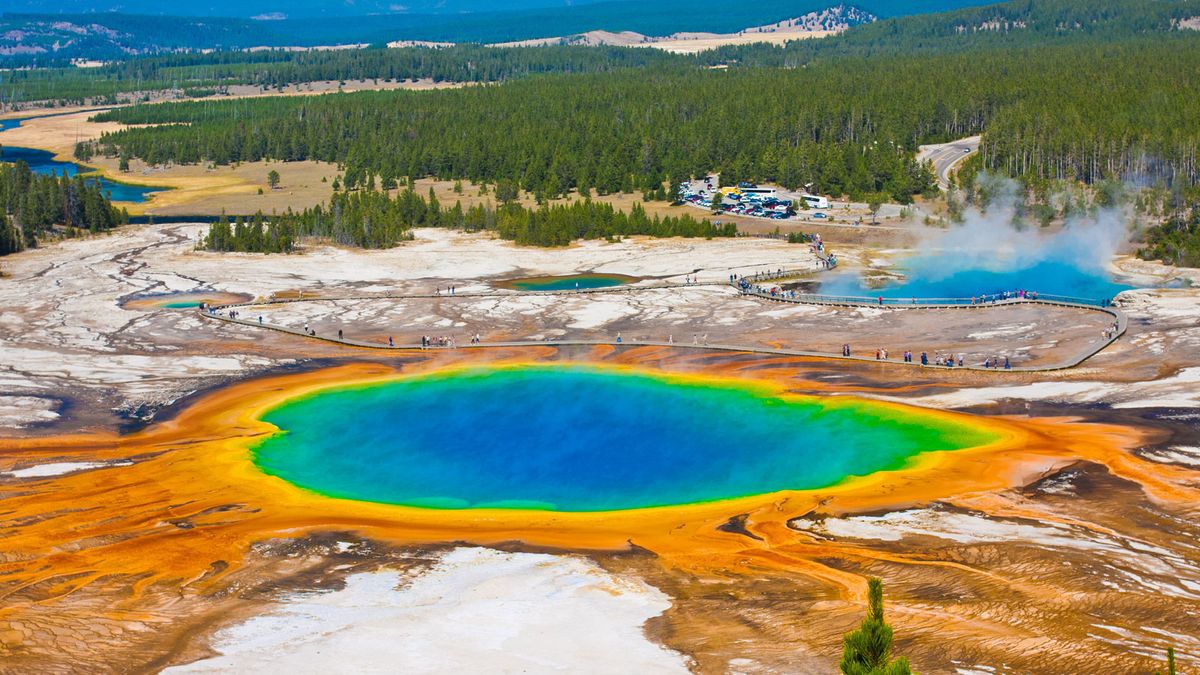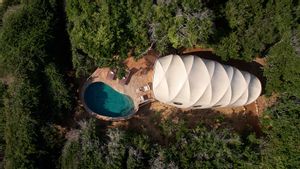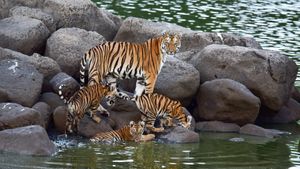I was only eight years old when I resolved to visit Yellowstone National Park. I poured through a photo album (there was no Instagram or family WhatsApp group back then) of my uncle and aunt’s visit to Yellowstone and it was their images and stories around the Old Faithful geyser that piqued my interest.
The first thing I did after my recent visit to Yellowstone was to share a time-lapse video of the Old Faithful geyser with my aunt. But that wasn’t the highlight of my visit. It was the experience of being out in the woods with my school buddies — my first backcountry camping experience in the world’s oldest national park.
An American icon

It might have been the time of the great push west in the US, an era of expansion, but it was also the time when the US federal government designated Yellowstone as the first National Park on March 1, 1872. It is spread across 2.2 million acres and three states – Wyoming, Montana and Idaho – in the western United States.
The Yellowstone National Park Protection Act deemed the entire Park as a “reserved area withdrawn from settlement, occupancy, or sale and dedicated and set apart as a public park or pleasuring ground for the benefit and enjoyment of the people”. It set the template for America’s National Park Service.
Backcountry camping adventures

A lot of my friends asked me how backcountry camping is different from backpacking. Backcountry camping boils down to carrying everything you need and heading to your campsite on foot. Backpacking is just how you get to your backcountry camping site.
Yellowstone National Park maintains 293 designated backcountry campsites. Each designated campsite has a maximum limit for the number of people allowed per night. The maximum stay per campsite varies from 1 to 3 nights per trip. Group size limits range up to 12 people.
We secured a permit to camp on Ice Lake. Our campsite was about 5 km away from our parking lot. This was an ideal trail for beginners like us and perfect for a day trail or an overnight trail like the one we did. You will need at least a basic level of fitness to hike to your campsite with a 20-30 kg backpack. So don’t cheat on those gym and fitness routines before you plan your trip.
It's all about prep
‘Leave no trace’. That’s the golden rule in Yellowstone and camping sites everywhere. Leave the campsite the way you found it and respect the environment.
A backcountry trip requires a lot of planning. My school buddies, who live in Los Angeles, did most of the planning and also ensured we had the right equipment.
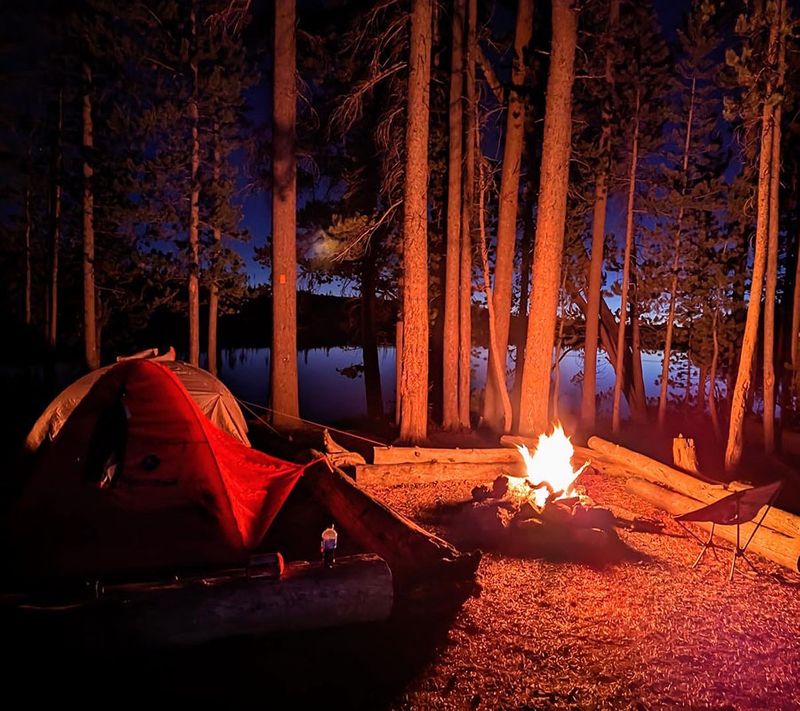
Our Yellowstone trip began at Bozeman in Montana where we hired a car and stopped at a camping essentials store before we made a night stop at West Yellowstone, one of the gateway towns to the park. Our equipment included tents, sleeping bags (and pads) and food. We had a bunch of freeze-dried meals – all we needed to do was add hot water that we cooked on a portable stove for a delicious meal. The highlight was building a campfire at night with twigs around the campsite and taking in the views of the lake and the starry sky.
‘Bear’ essentials
We secured our permit at one of many Park offices. But before we could set out for our campsite, we were asked to sit through a video presentation on preparing for bear interactions (I prefer this word to attacks).
Yellowstone is home to a large population of grizzly and black bears. We took some courage from the numbers in the presentation – since 1979, Yellowstone has hosted over 118 million visits. During this time, 44 people have been injured by bear attacks. Of these, 91% were hiking alone or with only one hiking partner. Our group was three-member strong and I urge you to plan your backcountry camping trip to Yellowstone in groups of three or more.

All campsites provide a good storage pole or box. You have to bring your own rope and store your food in a bear canister to secure the food from the bears. The other essential is bear spray (that you always keep holstered) to create a quick cloud of spray to divert the bears. The other trick is to drop down and play dead, with your backpack serving as a shield against the bear. I’d also suggest avoiding hiking at dawn or during the night when grizzly bears are most active. Thankfully, our only bear encounter was with a grizzly – a safe distance away – that we spotted from the highway on our way back.
Never missed a date
The Old Faithful was the reason I came to Yellowstone. First discovered in 1870 by the Washburn Expedition, the Old Faithful geyser was named for its frequent and somewhat predictable (approximately once every 75 minutes) eruptions (more than a million since 1872). Located in Yellowstone’s Upper Geyser Basin, the world’s best-known geyser can vary in height from 100-180 feet. The eruptions normally last between 1.5 to 5 minutes.
It can get crowded. We picked a shoulder season and also got there before noon. The site is more crowded from 12 to 6 pm when most bus tours and visitors arrive.
Multicolour appeal
It may not be as famous as Old Faithful but the Grand Prismatic Hot Spring is my favourite spot at Yellowstone and the most photographed thermal feature at the park. It’s the third-largest spring in the world. The multicoloured layers get their hues from different species of thermophile (heat-loving) bacteria living in the progressively cooler water around the spring.
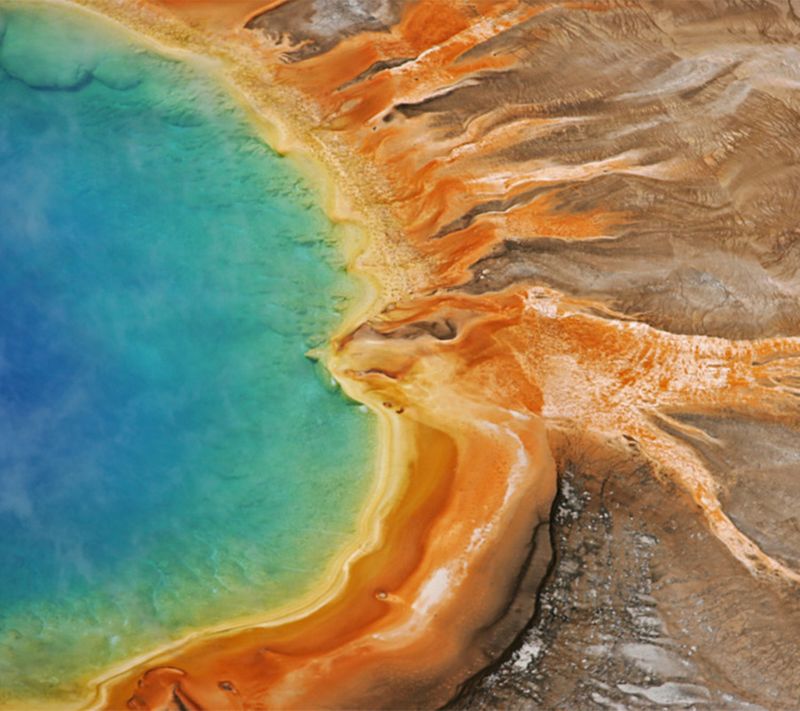
I suggest taking the Grand Prismatic Overlook trail for the best views of this multicoloured spring and Midway Geyser Basin. It’s one more excuse to visit Yellowstone. After three days at Yellowstone, I still didn’t manage to cover all the popular spots like Mammoth Falls. I know I will be back, just like I resolved when I was a kid.
Quick facts
Bozeman airport is your best entry point and the closest major airport. You can pre-book your rental car/SUV from this airport. A seven-day vehicle entry pass costs USD 35. Pre-book your backcountry permits before you arrive. You can choose to use West Yellowstone as a base and travel back and forth to the park if you don’t fancy sleeping outdoors. Make sure you check and re-check your camping gear and take expert advice before you go backcountry camping.


